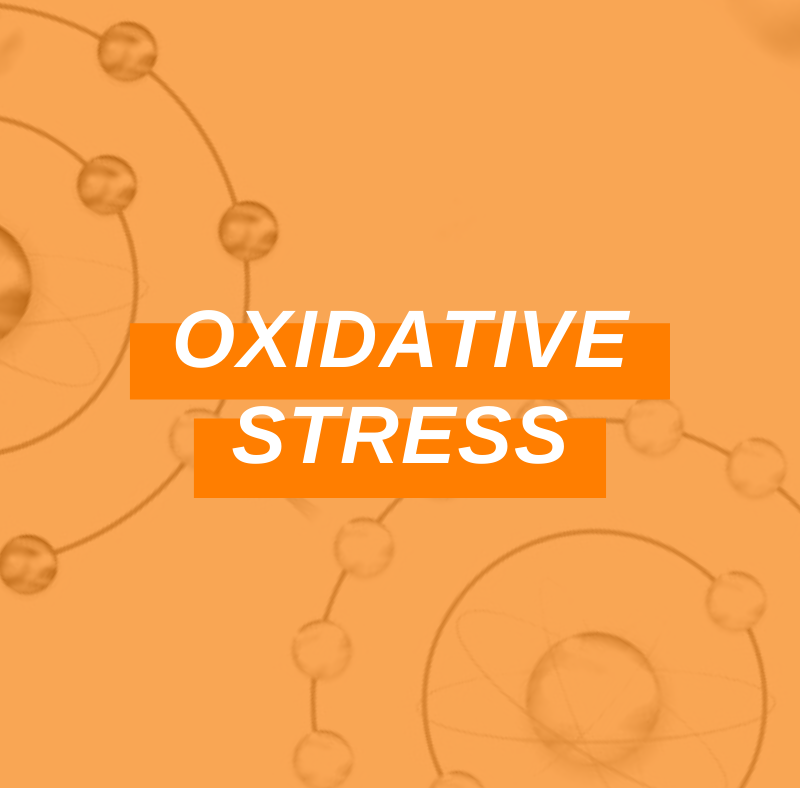
Both scientific and anecdotal evidence consistently indicates that more active individuals tend to experience greater longevity and a reduced risk of coronary heart disease, stroke, and many forms of cancer. A regular, moderate exercise routine leads to higher natural antioxidant levels and therefore a decreased chance of the potential damage inflicted by oxidative stress. However, regularly engaging in a very high volume of aerobic exercise can bring about a significant uptick in oxidative stress, causing typically healthy exercise to work against us.
Exercise vs. Physical Activity
According to the American College of Sports Medicine and the American Heart Association, the following provide explanations of, and the subtle differences between, physical activity, exercise, and cardiovascular exercise:
- Physical activity means movement requiring energy, carried out by the muscles.
- Exercise refers to planned, structured, repetitive and intentional movement, with the goal of improving/maintaining physical fitness.
- Cardiovascular exercise describes exercise that challenges the heart and vascular systems, designed to increase the heart’s ability to pump blood and distribute oxygen to tissues throughout the body.
Clearly, any or all of these “verbs” serve to benefit the body. However, as in all things, moderation works best.
The Paradox of Oxidation
Simple oxidation within the body, a very necessary property of healthy cells, differs greatly from oxidative stress. When the presence of free radicals matches the body’s level of antioxidant activity, the normal process of oxidation serves to eradicate pathogens (germs that cause infections). Exercise plays a positive key role in this process, as we will read in subsequent sections of this article, as does proper nutrition.
Free radicals, or oxygen reactive species, refer to those oxygen-containing molecules within the body that possess an uneven number of electrons, leaving them free to cause the large-chain reactions we call oxidation. As noted above, our bodies actually require this process to ensure proper, healthy function.
The problematic side of the paradox begins when the body detects an imbalance between the presence of antioxidants and free radicals. Too many roaming free radicals sets the cycle of damage in motion that ultimately impacts DNA, proteins, and other tissues within the body, rendering us vulnerable to oxidative stress. Since oxidative stress relates strongly to the pathogenesis of lifestyle-related diseases — atherosclerosis, high blood pressure, diabetes, Parkinson’s/Alzheimer’s diseases, and even some malignancies – this condition over time contributes to the aging process itself. Overzealous fitness fanatics who engage in tremendous amounts of aerobic exercise also place themselves at high risk of oxidative stress damage.
Free Radicals and Heart Disease
During recent years, accumulating data have elucidated the process of how oxidative stress works as a causative agent for the many aforementioned disease states, most specifically regarding cardiovascular problems. Plaque formation within the arteries results from inflammation of cells’ endothelial lining, which in turn generates more free radicals. When an overabundance begins to surge throughout the body, targeting and oxidizing low-density lipoproteins (LDL), the resulting accumulation of lipids will typically end up forming atherosclerotic plaque.
Symptoms of Oxidative Stress
What telltale signs reveal the presence of serious oxidative stress roaming throughout the body? The list below comprises the most commonly reported effects:
- Fatigue
- Memory loss and/or brain fog
- Muscle and/or joint pain
- Diminished eyesight
- Headaches/noise sensitivity
- Susceptibility to infections
One may easily argue the point that all of these symptoms typically occur with advancing age. We mentioned above that excessive oxidative stress can contribute to the aging process. The more scientists learn and share information regarding the detrimental effects of oxidative stress, the more we can begin to see a clear picture emerging. Once again, we must underscore the importance of moderate exercise in maintaining a properly functioning healthy body.
Achieving Antioxidant Abundance
Antioxidants delay or prevent cellular damage by their inherent ability to detect, and therefore disarm, the presence of free radicals. They accomplish this by easily donating their extra electrons to free radicals while remaining stable themselves, in effect neutralizing those dangerous substances and slowing their damaging effects. The body cannot manufacture some of the key antioxidants, such as Vitamin E, Vitamin C, and beta-carotene; therefore, these must be obtained from food sources…the reason we encourage the public to consume colorful fresh fruits and vegetables in abundance daily.
Amplifying Absorption
As with so many other food sources, a certain percentage of individuals will present with allergies to healthy and antioxidant-rich fruits and vegetables. To serve this need, efforts have been made to identify antioxidant-rich micronutrients and healing natural compounds (nutraceuticals) which demonstrate the ability to prevent or attenuate exercise-induced oxidative stress and inflammation. The search has intensified in recent years, with a focus on the properties and benefits of three natural substances: quercetin, resveratrol, and curcumin.
These antioxidant-rich plant derivatives have enjoyed much popularity in supplement form as a means of ameliorating such health problems as cardiovascular disease, cancer, diabetes, and the overall aging process – the unfortunate results of too many free radicals. Unlike the consumption of whole foods, however, the poor absorption rate and hence bioavailability of each of these renders them less potent.
Recently, scientists have uncovered the secret to boosting their benefit: ingesting quercetin, resveratrol, and curcumin together dramatically increases the compounds’ intestinal absorption, placing them exactly where they can have the greatest effect on the body.
Purposeful Movement
As personal trainers, there will undoubtedly come a time when we interact with clients who do not share our joy of fitness-related movement. When working with these individuals, we need not concern ourselves (or them) with the oxidative stress risk brought about from overdoing high-volume aerobic exercise, as clearly any risk of this happening seems minimal at best. For these clients, the other side of the coin must take top priority. Our goal always remains to cultivate a safe and positive outlook on exercise, one that promotes and fosters not only improvements in body mass, endurance, flexibility, balance, and self-esteem, but also keeps the inner physiological mechanisms running smoothly.
References:
cardio.com/blog/what-is-the-difference-between-physical-activity-and-exercise
acefitness.org/education-and-resources/lifestyle/blog/5460/physical-activity-vs-exercise-what-s-the-difference/
frontiersin.org/articles/10.3389/fnagi.2010.00012/full
pubmed.ncbi.nlm.nih.gov/33628774/
journal.restorativemedicine.org/index.php/journal/article/view/47
saaka.com/blogs/news/the-difference-between-fitness-and-exercise
hindawi.com/journals/omcl/2017/8416763/
linkedin.com/pulse/5-signs-oxidative-stress-7-ways-you-can-stop-wilson-nd-cpm-cns/
aspetar.com/journal/viewarticle.aspx?id=10#.YFZMAS2cY8Y
pubmed.ncbi.nlm.nih.gov/11427763/
med.or.jp/english/pdf/2002_07/271_276.pdf
ncbi.nlm.nih.gov/pmc/articles/PMC5908316/
healthline.com/health/oxidative-stress
ncbi.nlm.nih.gov/pmc/articles/PMC5551541/
ncbi.nlm.nih.gov/pmc/articles/PMC3249911/








